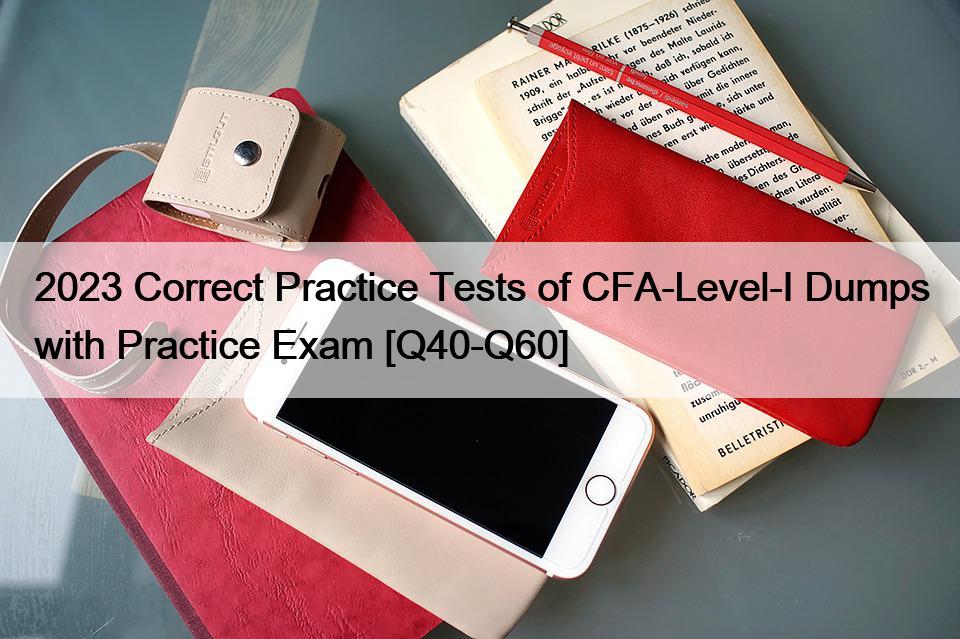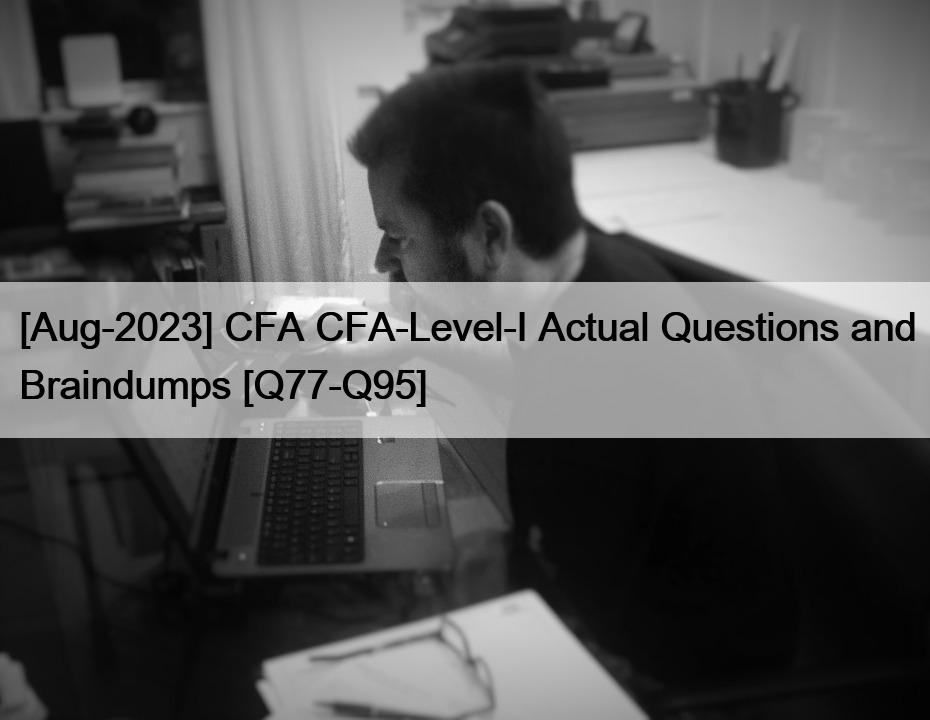Use Free CFA-Level-I Exam Questions that Stimulates Actual EXAM
Get 100% Real CFA-Level-I Free Online Practice Test
CFA CFA-Level-I: CFA Institute CFA Level I Chartered Financial Analyst Certification Path
In the CFA Level 1 test, the candidates can gain results with CFA Level 1 exam dumps pdf. Candidates will find in the Qualification Issues Forum what they are searching for. If the applicant fully practises these queries, he will comfortably deal with his exam. When they memorize them, they get a sense of the real test. Applicants should recognise all measures a candidate should provide in order to pass the CFA Level 1 Exam Qualification. Candidates are only a few steps away from the performance. So if the candidates schedule our CFA level 1 exam dumps, they will realise their dream.
Be one with your calculator. You must understand how to use the calculator features that are used to answer the learning outcomes (LOS).Examination issues relating to financial reporting and analysis (FRA) are focused, as otherwise defined, on International Financial Reporting Standards (IFRS). When an issue is focused on the U.S. GAAP, the question is specified. Answer all queries. Answer all the questions. There is no punishment for wrong responses. Comfortably dressed up. There is no dress code, but laid-back attire is encouraged.Calm shoes are a bonus. CFA Level 1 practice exams is the best start towards understanding the concepts of examination.
How to book CFA CFA-Level-I: CFA Institute CFA Level I Chartered Financial Analyst Exam
You must follow these steps to apply for CFA Level 1:
- Go to the Official Site CFA Level 1
- Carefully read the directions
- Follow the steps mentioned
- Apply for the CFA level 1
Topics of CFA CFA-Level-I: CFA Institute CFA Level I Chartered Financial Analyst Exam
Before preparation begins, candidates need to know the examination topics. And it’s going to help them to reach the center. CFA Level 1 exam dumps will include the following topics:
- Quantitative Methods
In this section, we explore quantitative concepts and techniques used in financial analysis and investment decision making. We present descriptive statistics for conveying important data attributes, such as central tendency, location, and dispersion, and introduce characteristics of return distributions. The section also considers probability theory and its application in quantifying risk for investment decision making.
- Economics
- Ethical and Professional Standards
The focus of this topic is ethics, related challenges to ethical behavior, and the role ethics and professionalism play in the investment industry. We provide a framework to support ethical decision making and examine the CFA Institute Code of Ethics and Standards of Professional Conduct and Global Investment Performance Standards (GIPS).
In this section, we introduce analysis of fundamental concepts of supply and demand for individual consumers and firms. We also cover the various market structures that firms operate in as well as macroeconomic concepts and principles, including aggregate output and income measurement, aggregate demand and supply analysis, and analysis of economic growth factors. The section concludes with coverage of the business cycle and its effect on economic activity.
-
Alternative Investments
This topic explores alternative investments, including hedge funds, private equity, real estate, commodities, and infrastructure. We cover the use of alternative investments for diversification and higher returns. In this curriculum, we define alternative investments and the characteristics they have in common.
-
Portfolio Management
In this topic, we explain the fundamentals of portfolio and risk management, including return and risk measurement and portfolio planning and construction. We examine the needs of individual and institutional investors along with the range of available investment solutions. The capital asset pricing model is used to identify optimal risk in portfolios.
-
Equity Investments
Here we explore the characteristics of equity investments, security markets, and indexes and explain how to analyze industries, companies, and equity securities as well as the use of basic equity valuation models. Global equities are important for meeting longer-term growth and diversification objectives.
-
Financial Reporting and Analysis
Here we provide a thorough explanation of financial reporting procedures and the standards that govern financial reporting disclosures, with an emphasis on basic financial statements and how alternative accounting methods affect those statements and the analysis of them. We examine primary financial statements and provide a general framework for conducting financial statement analysis.
-
Fixed Income
In this topic, we explain how to describe fixed income securities and their markets, yield measures, risk factors, and valuation measurements and drivers. We also cover calculating yields, values of fixed income securities, the securitization of assets, the fundamentals of bond returns and risks, and basic principles of credit analysis.
Please go to
Use Free CFA-Level-I Exam Questions that Stimulates Actual EXAM [Q939-Q953] to view the test
BEST Verified CFA CFA-Level-I Exam Questions (2022) : https://www.trainingdump.com/CFA/CFA-Level-I-practice-exam-dumps.html


